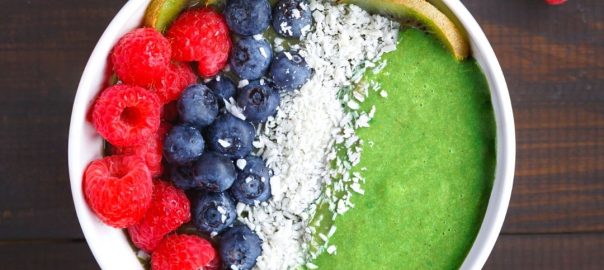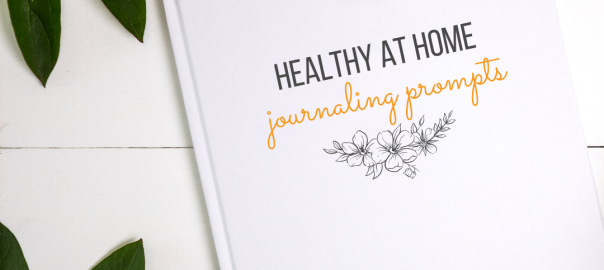Avocados are more than simply a delicious and creamy fruit. They're actually a wonderfully healthy addition to any clean eating nutritional plan.
Avocado nutrition profile
Avocados are an excellent source of fiber, pantothenic acid, vitamin K, copper, and folate. They are also a good choice for getting your potassium. Believe it or not, one serving of avocado has more potassium than a serving of banana.
One of the biggest benefits of avocados is that they are a very healthy source of beneficial monounsaturated fatty acids. This helps you to absorb more nutrients, like fat-soluble vitamins (A, D, E, and K). Fat is also important for helping your body to absorb carotenoids found in things like dark leafy greens. All of which makes adding avocado on your salad (and in other dishes) a really good choice.
Health Benefits of Avocados
Avocados have been shown to be good for heart health. Studies indicate that eating avocados can help to lower cholesterol. And eating them may also increase HDL (High-Density Lipoproteins, the “good” cholesterol) while reducing LDL (Low-Density Lipoproteins, the “bad” cholesterol), and triglycerides.
Another health benefit of avocados is their antioxidant benefits for eye health. They provide zeaxanthin and lutein which may reduce the risk of developing cataracts or macular degeneration.
Contrary to popular beliefs about their fat content, eating avocados may actually help with weight management. This is because the healthy fat and fiber in avocados can help you to feel full after eating. It may also help decrease the desire to overeat. And, if that's not enough, this high fiber and healthy fat profile may also help to balance blood sugar. This is encouraging for those who want to add avocados as part of a weight management plan.
Celebrate Avocados
Chock full of nutrients and so very delicious, there are a lot of tasty ways to add avocados to your meal planning. I'm talking more than just using it for a salad or making guacamole and chips. Here are three amazing recipes to help you think differently about avocados and get more avocado goodness into your diet.
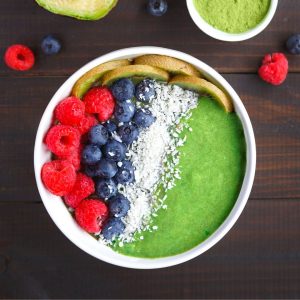
Avocado Kiwi Bowl
Ingredients
- 1 cup kale leaves
- 1 cup coconut milk
- 1 small banana
- 1/2 avocado
- 1/2 cup ice
- 1 tbsp maple syrup or honey
- 1/2 cup raspberries
- 1 diced kiwi fruit
- 1 tsp hemp seeds
Instructions
- Put the coconut milk into the blender
- Add the avocado, ice, kale, and 1/2 of the banana
- Blend until fully combined
- Top with raspberries, the other half of the banana- sliced, and sprinkled with the hemp seedsEnjoy!
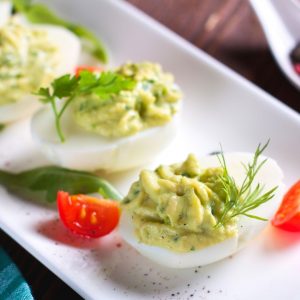
Avocado Deviled Eggs
Ingredients
- 8 large eggs
- 2 medium
avocados
- 1 tbsp lemon juice
1½
tbspavocado mayonnaise*
- ½ tsp garlic powder
½
tsponion powder
- ½ tsp paprika
½
tspcrushed red pepper flakes (optional)
- 3 tbsp fresh parsley
minced sea salt and fresh ground black pepper, to taste
Instructions
- Place eggs in a large pot, cover by an inch or two cold water and bring to a rolling boil
- Cover and turn off heat
- Let the eggs sit, covered, for 11-12 minutes
- Drain the eggs and rinse in cool water
- Peel eggs and slice in half lengthwise
- Remove the yolks and place in a small mixing bowl
- Arrange the egg whites on a plat
- To the yolks add avocado, lemon juice, avocado mayonnaise, garlic powder, onion powder, paprika, and red pepper (if using)
- Season to taste with sea salt and fresh ground black pepper
- Mash all ingredients together until well combined
- Spoon one tablespoon of mixture into each egg half
- Top with fresh parsleyCan be served immediately or refrigerated to serve laterEnjoy!
Notes
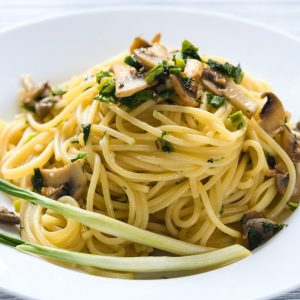
Avocado Carbonara
Ingredients
- 1 medium-sized ripe avocado
- 1/2 cup lemon juice
- 3 cloves garlic
- pinch of salt
- 1/4 cup parsley
- 1/4 cup basil
- 2 tbsp olive oil
- 1/3 cup raw pepitas
- 1/2 cup baby portabella mushrooms, cleaned, sliced
- 1 tbsp extra virgin olive oil
- 1/4 cup pomegranate arils (optional)
- ground pepper
- 2 zucchinis - zoodled
Instructions
- Cook the pasta
- Place zucchini into a colander
- Drain pasta into zucchini
- Rinse and set aside
- In a separate pan saute mushroom slices in olive oil
- When done take off the heat and set aside
- Place lemon juice, garlic and olive oil in a food processor or blender, blend until smooth
- Add avocado, parsley and basil, process until smooth
- Gently fold together the sauce, pasta, and zucchini
- Garnish with mushrooms, pepitas, and pomegranateServe and enjoy!
Alvizouri-Muñoz, M et al. “Effects of avocado as a source of monounsaturated fatty acids on plasma lipid levels.” Archives of medical research vol. 23,4 (1992): 163-7.
Carranza, J et al. “Efectos del aguacate sobre los niveles de lípidos séricos en pacientes con dislipidemias fenotipo II y IV” [Effects of avocado on the level of blood lipids in patients with phenotype II and IV dyslipidemias]. Archivos del Instituto de Cardiologia de Mexico vol. 65,4 (1995): 342-8.
Delcourt, Cécile et al. “Plasma lutein and zeaxanthin and other carotenoids as modifiable risk factors for age-related maculopathy and cataract: the POLA Study.” Investigative ophthalmology & visual science vol. 47,6 (2006): 2329-35. doi:10.1167/iovs.05-1235
Khachik, F et al. “Identification of lutein and zeaxanthin oxidation products in human and monkey retinas.” Investigative ophthalmology & visual science vol. 38,9 (1997): 1802-11.
López Ledesma, R et al. “Monounsaturated fatty acid (avocado) rich diet for mild hypercholesterolemia.” Archives of medical research vol. 27,4 (1996): 519-23.
Wien, Michelle et al. “A randomized 3×3 crossover study to evaluate the effect of Hass avocado intake on post-ingestive satiety, glucose and insulin levels, and subsequent energy intake in overweight adults.” Nutrition journal vol. 12 155. 27 Nov. 2013, doi:10.1186/1475-2891-12-155
Avocado Carbonara Recipe courtesy of Linda Rosario

